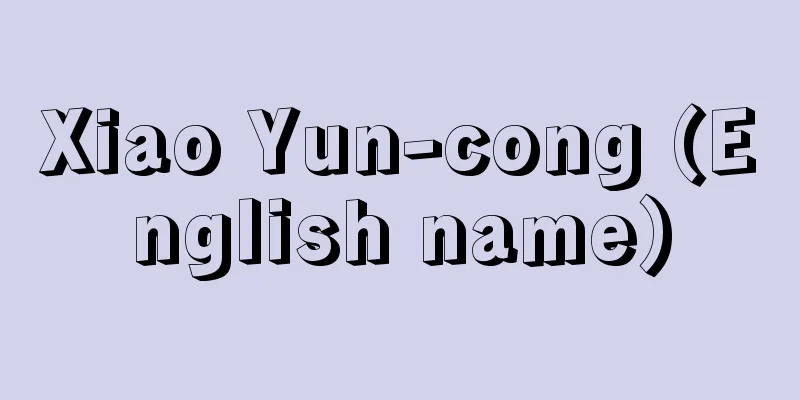Local government officials' conference

|
A conference held in the early Meiji period, composed of local governors as members. It was held three times. Unlike later conferences of local governors, which were simply administrative meetings, it played a major role in the reform of the local government system in the early Meiji period. Reflecting the discussion of establishing a popularly elected assembly, which was finally gaining momentum at the time, the Dajokan planned it, and on May 2, 1874 (Meiji 7), an imperial edict was issued to hold a local officials conference once a year for the purpose of smooth local administration. At the same time, the constitution and rules of the assembly were established, and public officials, ward heads, etc. were allowed to observe the proceedings. However, it was not held immediately, and the first conference was held in Tokyo in June and July of the following year, 1875, after a public promise to hold another conference in the imperial edict for the gradual establishment of a constitutional government. Takayoshi Kido was the chairman. The agenda items included roads, embankments, and bridges (additional civil fees), local citizens' assemblies, methods of relief for the poor, and the establishment and protection of primary schools, but the most important item was the issue of local citizens' assemblies. After discussions on whether prefectural and ward assembly members should be publicly elected or ward and household heads, it was decided to have ward and household head assemblies. The second meeting was held in April-May 1978, chaired by Ito Hirobumi, and the main agenda was the enactment of the Three New Laws. The third meeting was held in February 1980, also chaired by Ito Hirobumi, and the main agenda items were the revision of the Three New Laws and the enactment of the Ward, Town and Village Assembly Law and the Reserve Savings Law. [Yamanaka Einosuke] [Reference] |Source: Shogakukan Encyclopedia Nipponica About Encyclopedia Nipponica Information | Legend |
|
明治前期に開かれた、地方長官を議員として構成された会議。開催回数は3回。後の単なる事務的会合である地方長官の会議と異なり、明治前期の地方制度の改革に大きな役割を果たした。当時ようやく盛んになりつつあった民撰(みんせん)議院開設論を反映して、太政官(だじょうかん)が計画、1874年(明治7)5月2日、地方行政を円滑に行う目的で地方官会議を毎年1回開くとの詔(みことのり)が下された。同時に議院憲法および規則を制定、官吏、区戸長などの議事傍聴も許した。しかし、すぐには開かれず、翌75年4月の漸次立憲政体樹立の詔でふたたび開催を公約したのちの6~7月に、木戸孝允(たかよし)を議長として第1回の会議が東京で開かれた。議案は、道路堤防橋梁(きょうりょう)の事(付(つけた)り民費の事)、地方民会の事、貧民救助方法の事、小学校設立および保護法の事であったが、とくに重要な議案は地方民会の事で、府県会、区会の議員を公選とするか、区・戸長とするかについて討議の結果、区・戸長会とすることに決した。第2回は伊藤博文(ひろぶみ)を議長として78年4~5月に開かれ、三新法の制定がおもな議題であった。第3回は同じく伊藤博文を議長として80年2月に開かれ、三新法の改正と区町村会法、備荒貯蓄法の制定が重要議題であった。 [山中永之佑] [参照項目] |出典 小学館 日本大百科全書(ニッポニカ)日本大百科全書(ニッポニカ)について 情報 | 凡例 |
Recommend
Ogedei Khan - Ogodei Khan
…His posthumous name was Taizong. He is also call...
Yushin
A poet of the Northern Zhou Dynasty in China. His...
Brook Farm
An idealistic farm established in April 1841 in We...
Litharge
…This is what is usually meant when people talk a...
Toaster - toaster (English spelling)
An electric toast toaster. There are various type...
Cho Wich'ong (English name)
[raw]? [Died] Myeongjong 6 (1176) A military comma...
Matured Tatsu - Nikitatsu
Also called "Nikitazu." A pier located n...
Water of Edo
The water from the waterworks in Edo. Edoites were...
Peterborough Chronicle
…The original was compiled in the late 9th centur...
Kiyomoto Saibei
The stage name of a shamisen player in Kiyomoto-bu...
Things - things
[1][一] Refers to objects with some form in general...
Kachin language - Kachingo
Kachin is a language that belongs to the Tibeto-Bu...
Kamenooyama
...295m above sea level. The ridge of 70-80m abov...
Villon, J.
…Critics such as Louis Vauxcelles denounced this ...
Dishonored check - Fuwatari
When a bill or check is not paid despite the payer...









